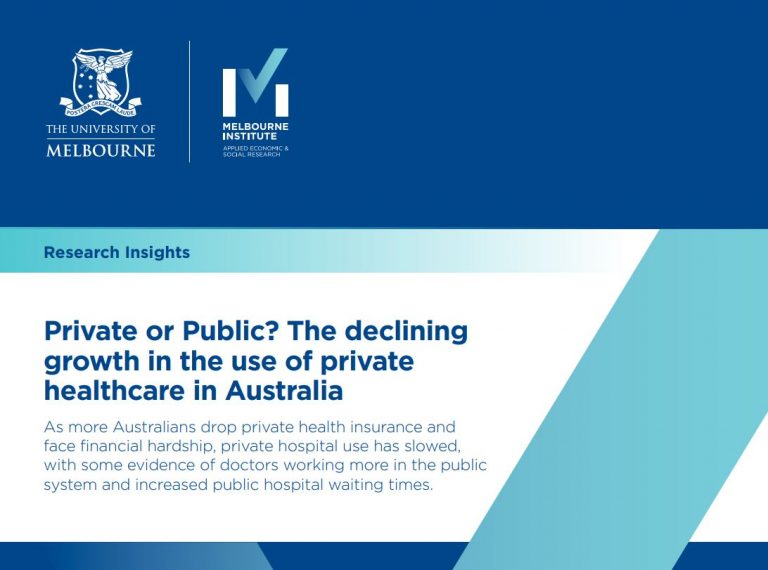Australian Private Hospital Use Has Declined in Growth in Recent Years

The Australian health system has long been characterised by a “rich public-private mix of financing and provision”. This mix has included the hospital sector, with the proportion of private hospitals in the country standing at about 47% as of 2017/18. However, in line with a steady decrease in private health insurance coverage over the past five years, new research has found a slowing in private hospital use.
In “The falling growth in the use of private hospitals in Australia”, a paper and accompanying report released this week by the Melbourne Institute, PCHSS investigator Professor Anthony Scott and colleagues examine this trend. Their work touches on a number of dynamics at play in the declines in the private healthcare sector, including increasing out-of-pocket medical costs amidst low wage growth and evidence of doctors working more in the public system.
Drawing on publicly available data, the researchers note that between June 2015 and May 2020 private health insurance membership fell from 47.4% to 43.6% of the overall population, mainly the result of young and healthy people dropping their private insurance, and this change seems to be partially responsible for decreases in private hospital use. In this regard, they found a decline in the growth rate of “separations” (episodes of care for an admitted patient) using private health insurance in private hospitals: while there was a 6.5% growth rate for such separations between 2010/11 and 2015/16, there was only a 2.1% growth rate between 2015/16 and 2018/19.
The researchers also found that non-GP specialists have been working less in private hospitals and more in public hospitals in recent years. For example, while specialists averaged over 19 hours of clinical work per week in private settings in 2013, they averaged less than 18 hours per week in 2018. The same period witnessed a nearly proportionate increase in their hours worked in public settings, from 18 hours per week in 2013 to 18.8 hours per week in 2018.
The paper states that these and other developments “consistently point towards a private health system that is facing flattening demand”, and that the COVID-19 pandemic has aggravated these trends. Noting that the private sector will have to continue to adapt to this new reality, the researchers conclude that it will be important to follow how these changes influence both quality of care and costs to patients and governments. This, they say, “will help ensure the delivery of value-based health care in hospitals regardless of sector, and also provide evidence to help ensure that any changes to government expenditure generate better health for patients at least cost.”

